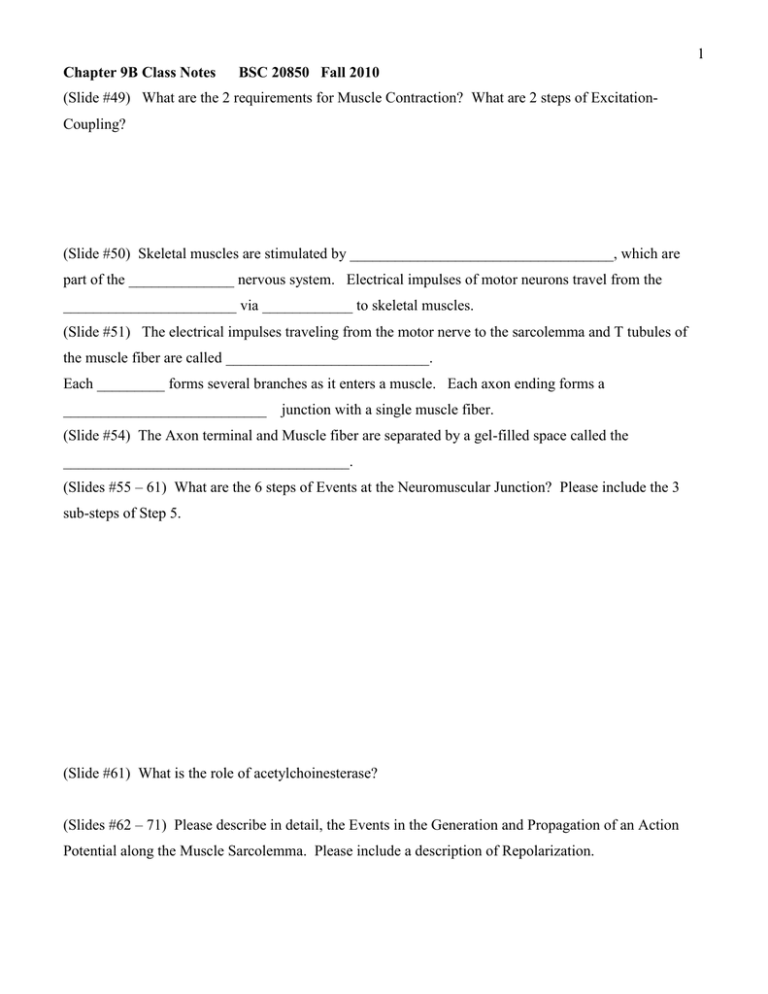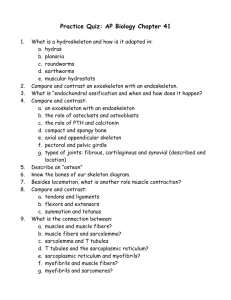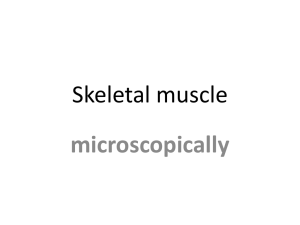1 (Slide #49) What are the 2 requirements for... Coupling?
advertisement

1 Chapter 9B Class Notes BSC 20850 Fall 2010 (Slide #49) What are the 2 requirements for Muscle Contraction? What are 2 steps of ExcitationCoupling? (Slide #50) Skeletal muscles are stimulated by ___________________________________, which are part of the ______________ nervous system. Electrical impulses of motor neurons travel from the _______________________ via ____________ to skeletal muscles. (Slide #51) The electrical impulses traveling from the motor nerve to the sarcolemma and T tubules of the muscle fiber are called ___________________________. Each _________ forms several branches as it enters a muscle. Each axon ending forms a ___________________________ junction with a single muscle fiber. (Slide #54) The Axon terminal and Muscle fiber are separated by a gel-filled space called the ______________________________________. (Slides #55 – 61) What are the 6 steps of Events at the Neuromuscular Junction? Please include the 3 sub-steps of Step 5. (Slide #61) What is the role of acetylchoinesterase? (Slides #62 – 71) Please describe in detail, the Events in the Generation and Propagation of an Action Potential along the Muscle Sarcolemma. Please include a description of Repolarization. 2 (Slide #72) Excitation-Contraction (E-C) Coupling is a sequence of events whereby an Action Potential traveling along the sarcolemma leads to the __________________________________________ that creates a ______________________. What is the Latent Period of E-C Coupling? (Slide #74) What are the first 2 Steps of E-C Coupling? (Slide #74) T tubules and the SR form an integrated ____________. Ca2+ is necessary for muscle _______________. Slides # 79 – 80) What are Steps 3 and 4 of E-C Coupling? (Slide #84) The ___________________________continues as long as the Ca2+ signal and adequate ________ are present. (Slides #84 – 90) Please describe the 4 Steps of the Cross Bridge Cycle.



